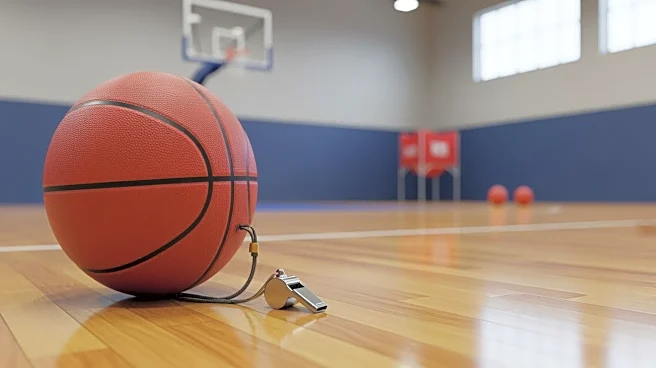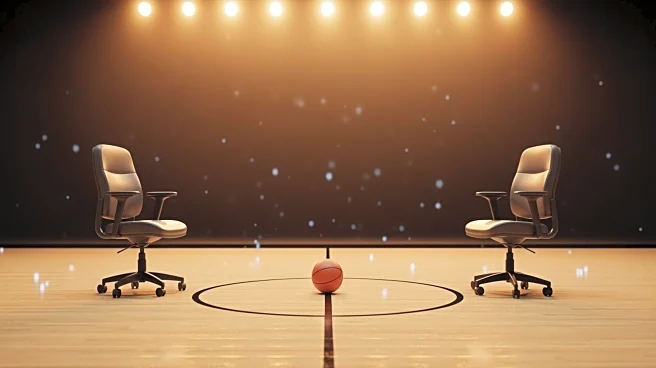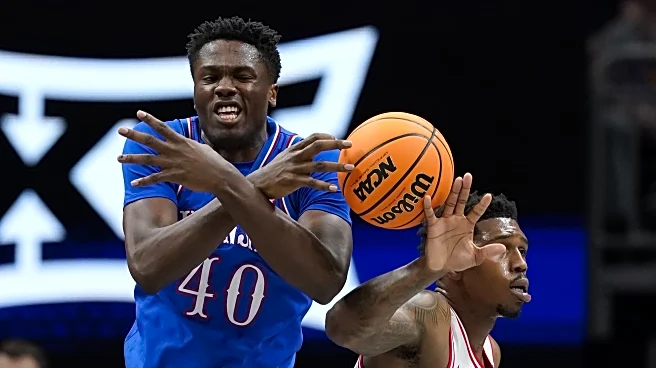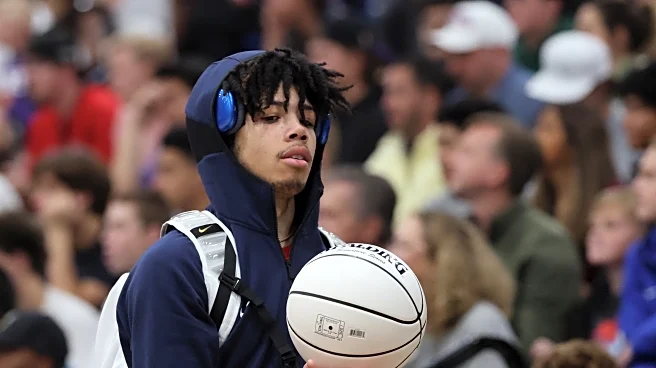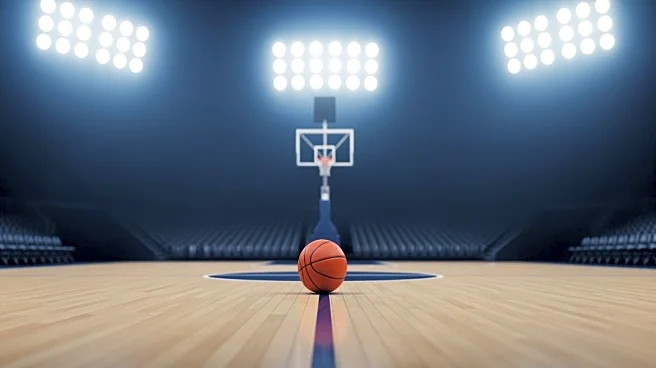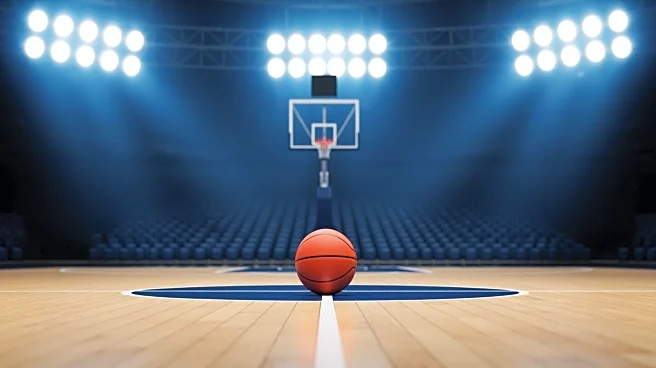What's Happening?
The Kansas men's basketball team recently held their Late Night in the Phog scrimmage, where Team Crimson narrowly defeated Team Blue 27-23. Freshman guard Darryn Peterson led the scoring with 12 points
for Team Crimson, being the only player to reach double figures. The scrimmage highlighted shooting struggles, with both teams combining for just 2-of-15 from three-point range. Kansas head coach Bill Self noted the impact of adrenaline and fatigue on the players during the scrimmage. Additionally, Self mentioned that the team has been unable to practice in Allen Fieldhouse due to excessive heat, which has caused full-body cramps in players during practice.
Why It's Important?
The shooting performance and inability to practice in their usual venue could impact Kansas's preparation for the upcoming season. The team's shooting struggles, particularly from beyond the arc, may require adjustments in strategy or additional practice to improve. The heat-related issues in Allen Fieldhouse could affect the team's conditioning and readiness, as they are forced to adapt to different practice environments. These challenges could influence Kansas's performance in early-season games, potentially affecting their standings and momentum.
What's Next?
Kansas will need to address their shooting inefficiencies and find alternative practice solutions until the heat subsides. Coach Self hopes for cooler temperatures in the coming weeks to allow the team to return to regular practice in Allen Fieldhouse. The team may also focus on conditioning to better handle game-time fatigue. As the season progresses, Kansas will aim to improve their shooting accuracy and adapt to any ongoing environmental challenges.
Beyond the Headlines
The situation highlights the broader issue of climate and environmental conditions affecting sports teams' preparations. As extreme weather becomes more common, teams may need to develop contingency plans for practice and conditioning. This could lead to increased investment in facilities that can better manage temperature and humidity, ensuring athletes' safety and performance.


